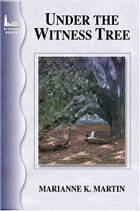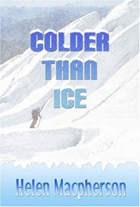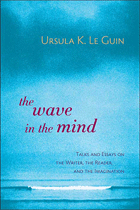Four Books Reviewed
by Lori L. Lake
| Lori L. Lake, is the author of Different Dress, Gun Shy, Under The Gun, Ricochet In Time, and Stepping Out is also a reviewer for Midwest Book Review, The Independent Gay Writer, The Gay Read, and Just About Write, and Golden Crown Literary Society’s The Crown. |
  Cinatis:
Book I in the Twilight of the Gods series Cinatis:
Book I in the Twilight of the Gods seriesby Ronald L. Donaghe Two Brother's Press, 2004 Paper, 585 pages ISBN: 159457619X As with many good fantasy novels, this story begins with a youth who must set out on a Quest. Sixteen-year-old Jeru, the youngest of three brothers, finds his life is turned upside down by a plague that has beset the land of Omoham. Before the onset of the panic, Jeru worked the family farm and dreamed at night of a shadowy man. His life was fairly simple, though it didn’t feel complete. Now everyone in the region is fleeing in fear. Jeru’s brothers and parents have already left the farm, but Jeru has chosen not to accompany them. Instead, he goes south, to Cinatis, in an effort to discover what is causing the plague and to try to discover why he feels such a disturbance in the earth. Jeru’s special gift is as a stone felder. He can feel in the stones under his feet that something evil is quite literally affecting the land. One thing that becomes apparent as Jeru makes his pilgrimage south is that as fast as his countrymen leave Omoham, the neighboring Ch'turc come in and take over their land and holdings. This doesn’t seem right. Then on the road long before he even reaches Cinatis, Jeru is attacked by Ch’turk rogues. Jeru is saved from death by Eril, a mysterious young man who Jeru soon realizes is the one who has been haunting his dreams. The two discover they are soul-mates and form a strong bond. They continue on the journey to Cinatis only to find that things are worse than they had imagined. The Ch’turk’s religious orders have posted new rules for the society that can only be described as joyless, discriminatory, regimented, and fundamentalist. They’ve outlawed relationships like Eril and Jeru’s, as well as disallowed the use of any sort of earth gifts, stonefelding included. Jeru’s abilities are not ones he has ever had to hide—or refrain from using—and everything about this is wrong and unnatural for him. The penalty for not following these new rules, though, is death. At the urging and with the assistance of other powerful characters, Jeru and Eril set out on a quest to learn the truth, and it is this journey of exploration that encompasses Book One of the “Twilight of the Gods” trilogy. The next book will be called GWI’S WAR and is due out very soon, with the third book, WAR AMONG THE GODS, to come later in 2005. I’ve been meaning to read this book for a long time, but it is a big one—585 pages—and that seemed a little daunting. Once I started it, however, it rolled along smoothly, revealing layer upon layer of information about a captivating world at the precipice of change. Jeru is a worthy protagonist, and his relationship with Eril is richly drawn. The villains are appropriately villainous, the “good guys” are engaging, and the land in which this epic plot takes place is fascinating. I very much look forward to the next installment of this series. |
  Under the Witness Tree Under the Witness TreeBy Marianne K. Martin 210 pgs/$12.95 ISBN: 1932859004 2004 Bywater Books PO Box 3671, Ann Arbor, MI, 48106, When an estranged great-aunt she’s never met dies and leaves Dhari Weston the ancient Grayson house outside Atlanta, Dhari is both curious and irritated. Traveling from Michigan to dispose of the old monstrosity sounds like a lot of extra work, and Dhari’s life is already far too full. Her time and energy are taken up by her job as a grant-writer for an AIDS coalition, a less-than-committed girlfriend, and serious problems in her family of origin. Little does she know that she’s at the crossroads of change and is about to be sorely tested by new experiences. Erin Hughes, a professor well-versed in Civil War era architecture and history is brought in to assess Anna Grayson’s house, and Dhari feels an unexpected attraction to her. Dhari also meets the elderly Nessie Tinker, descendant of the slaves who worked the land in the 1800s and who eventually became landowners and neighbors to the Graysons. Nessie served as caretaker and friend to Anna Grayson, and unbeknownst to Dhari and Erin, Nessie knows many of the secrets of the past—some of which go all the way back to Civil War times—that the two women are exploring. Dhari is gradually drawn in to the mysteries of the old house and its former occupants, but at the same time, her wandering girlfriend and mentally ill mother back in Michigan exert pressures upon her that keep her stressed and worried. Dhari has her own secrets, and as the story is revealed, the reader gradually comes to understand the depth of her pain and the extent to which she has gone to prevent anyone from knowing about it—even her girlfriend. When she lets slip to Erin some vital details, Dhari is appalled. “She’d been first-time lucky that Erin Hughes thinks the bones in her own closet shine just as bright white as hers. Most people, however, aren’t that honest. They lock their skeletons up behind propriety and self-protection and make choices that to the casual observer seem entirely normal. Just like Dhari Weston. It’s the closer inspection, the one that rattles the door, that has to be avoided” (p. 103). The ways that Dhari ends up “rattling that door” make for an engrossing read. The book itself is slight, but the issues raised and the secrets revealed make for powerful and unforgettable reading. This book was entertaining, and the way the pieces all came together was ultimately quite satisfying. Read it for the tight plot, for the mystery, for the romance—just don’t miss this engaging story.  Colder
Than Ice Colder
Than IceBy Helen Macpherson Quest Books, Regal Crest Enterprises, PMB 210, 8691 9th Avenue, Port Arthur, TX. 77642-8025, www.regalcrest.biz 2004/265 pgs/ $18.95/ISBN: 1932300295 What happens when two driven and independent professional women are forced to work together under circumstances neither can fully control? This is the situation archaeologist Allison Shaunessy and psychologist Michela DeGrasse find themselves in. Part of the problem from the beginning is that Allison craves control in her work life because she doesn’t really have it in her personal life. She’s been dating an oaf, and she hasn’t yet figured out that he’s a selfish jerk. She wants to focus on and run the expedition, but the sponsor who put up the money knows Michela and specifies that the psychologist be the one in charge. From the beginning, then, there’s a rivalry that’s not helped by the fact that seemingly straight Allison is drawn to Michela, who has, unfortunately, just lost her lover to a scheming colleague. So with both women in their own little barely contained crises, they set off on an trek into a remote part of Antarctica to investigate what might be the remains of the long-lost 1895 Finlayson Expedition. As they prepare and then travel, they are beset with all sorts of obstacles - from the money issues at the outset - to seasickness, illness, frightening weather conditions, stupid, risk-taking behavior, and the threat of violent death. Both Allison and Michaela are stubborn and wounded in their own ways, and neither is able to see that if they could just drop their guards and open up to one another honestly, they actually have a lot in common. That process makes for entertaining reading as do the twists and turns of the expedition, some of which are not expected. Ultimately, the book is more a romance than an adventure, but this cross-genre novel affords some thrills and more than a few chills. |
  The
Wave in the Mind: Talks and Essays on the Writer, the Reader,
and the Imagination The
Wave in the Mind: Talks and Essays on the Writer, the Reader,
and the ImaginationBy Ursula K. LeGuin Shambhala Publications, Inc., 300 Massachusetts Ave., Boston, MA, 02115, 2004/305 pgs/$16.95 /ISBN: 1590300068 Having read and enjoyed LeGuin’s previous non-fiction works (particularly DANCING AT THE EDGE OF THE WORLD, THE LANGUAGE OF THE NIGHT, and her writing book, STEERING THE CRAFT), I expected an interesting and entertaining volume of essays. What I got far exceeded my expectations. I was enchanted from the first words, and I could hardly wait to read as many of these pieces as I could gulp down each night. When I finished, I was unhappy it was all consumed. I wanted more. The book is a cornucopia of variety. There are serious essays, playful performance pieces, literary commentary, a long and wonderful poem entitled “The Writer on, and at, Her Work,” and even some sketches LeGuin has done. The volume is separated into four sections: Personal Matters, Readings, Discussions & Opinions, and On Writing. The first section gives the reader a glimpse of who Ursula LeGuin is. She talks a bit of her family, of her parents’ occupations (anthropologist father and biographer mother), and of her love of libraries and islands—imaginary and real. The next two sections cover all sorts of topics. Whether she was discussing awards and gender or the submerged humor of Mark Twain’s “Diaries of Adam and Eve” or literacy or rhythm in the works of JRR Tolkien, I felt I was in sure hands. I must admit that I expected the essay, “Stress-Rhythm in Poetry and Prose” to be deadly dull. Instead, I was surprised beyond my wildest imagination to find that for the first time in my entire life, someone had actually explained meter and rhythm so that it made complete sense to me. I had one of those “Aha!” moments, suddenly understanding it in a way that I had never quite managed. (So _that_ is how iambic pentameter works so effectively!) I’ve been raving ever since about rhythm to all who will listen. I like the fact that LeGuin does not hesitate to address sexism, homophobia, and unfairness. Her piece entitled “Unquestioned Assumptions” is masterful. She talks about the four common varieties of unquestioned assumption (We’re all men, white, straight, and Christian), and then adds a fifth which she explores at length: We’re all Young. Her analysis of these issues alone was worth the price of the book. The final section of the book is about writing and was my favorite section. LeGuin addresses many angles of craft and technique. The name of the book, THE WAVE IN THE MIND, refers to an explanation of style that Virginia Woolf once wrote in a letter. Concerning what rhythm is, Woolf had written, “A sight, an emotion, creates this wave in the mind…and then, as it breaks and tumbles in the mind, it makes words to fit it” (p. xii). LeGuin obviously agrees with this. She writes that “every novel has its characteristic rhythm. And that if the writer hasn’t listened for that rhythm and followed it, the sentences will be lame, the characters will be puppets, the story will be false. And that if the writer can hold to that rhythm, the book will have some beauty. What the writer has to do is listen for that beat, hear it, keep to it, not let anything interfere with it. Then the reader will hear it too, and be carried by it” (p. 183). This is sage advice. All of LeGuin’s ideas and advice—every chapter of it—is wonderful. I loved this: “Trust your story; trust yourself; trust your readers—but wisely. Trust watchfully, not blindly. Trust flexibly, not rigidly. The whole thing, writing a story, is a high-wire act—there you are out in midair walking on a spiderweb line of words, and down in the darkness people are watching. What can you trust but your sense of balance?” (p. 234). The examples, stories, and allusions throughout are clear and strong and elegant. Her Voice is powerful and wise, humorous and reflective. Ursula LeGuin quite clearly displays true genius. This is a book to savor, to keep, to read again and again over the years. I cannot recommend it highly enough. |